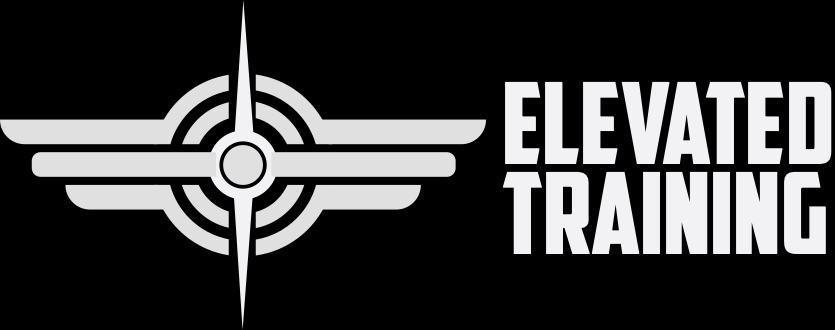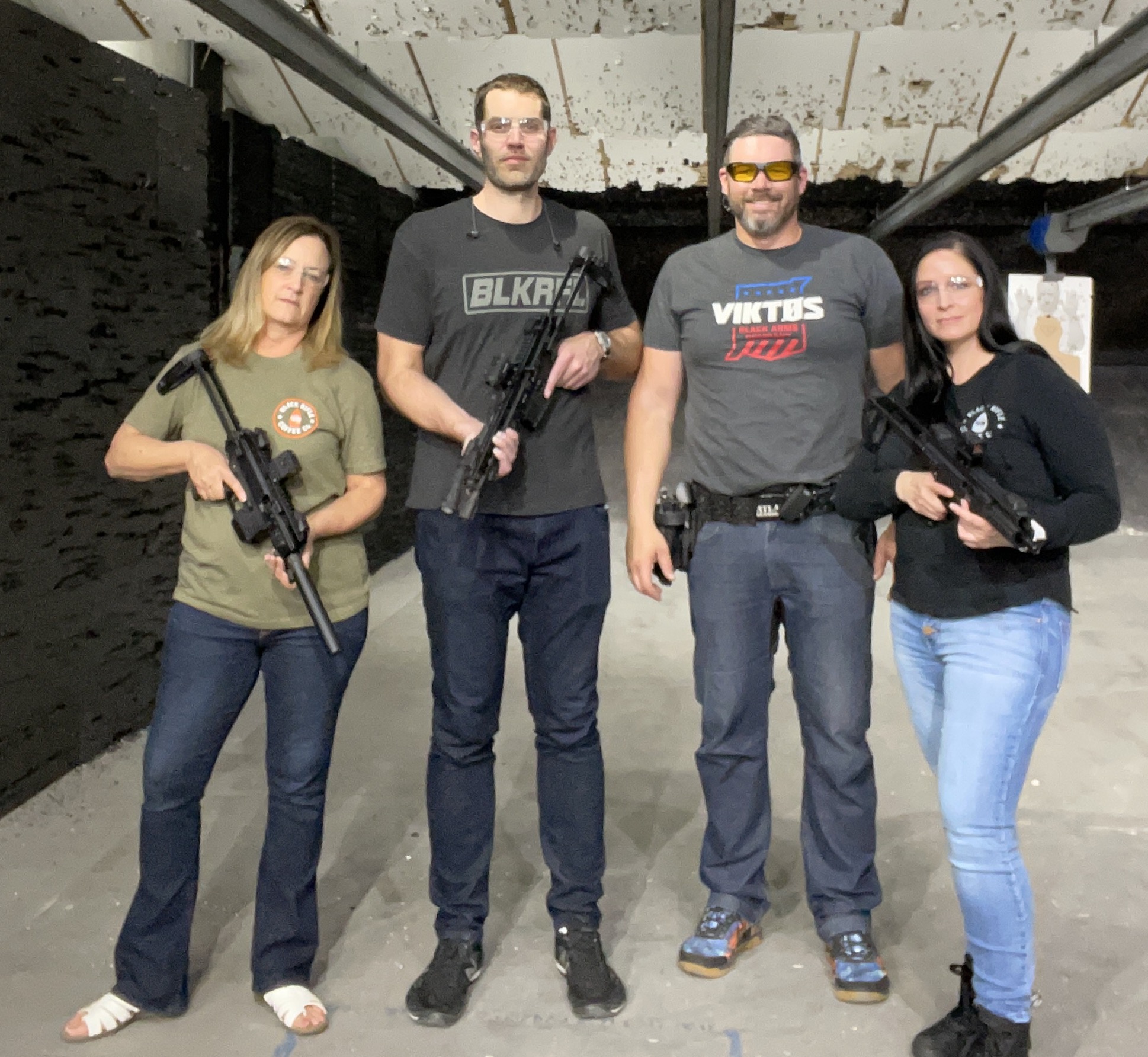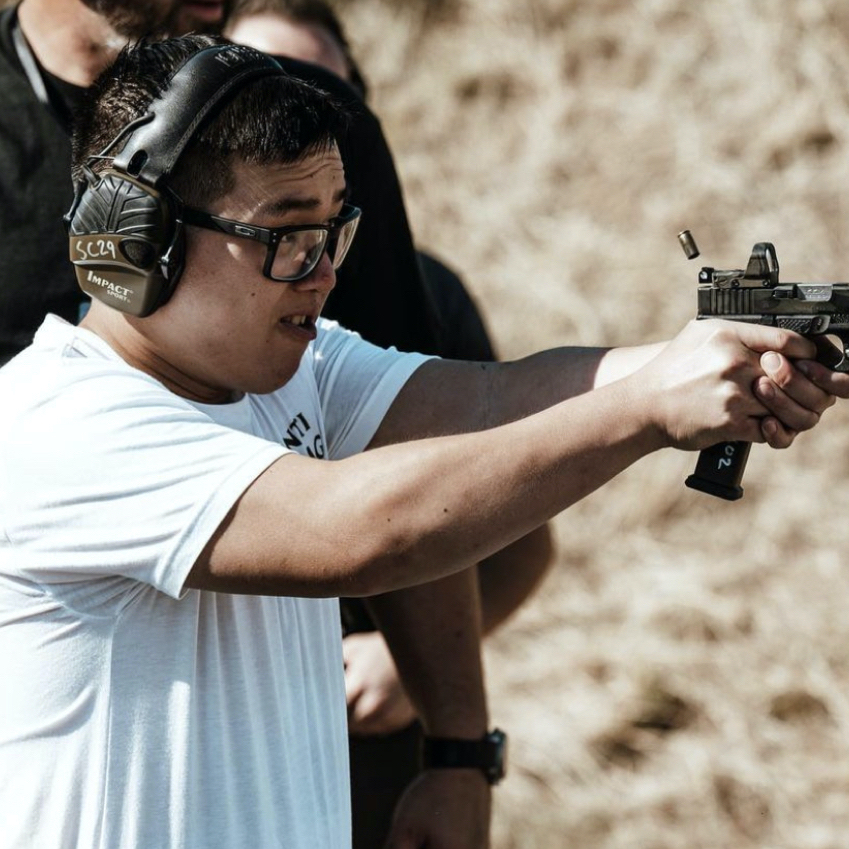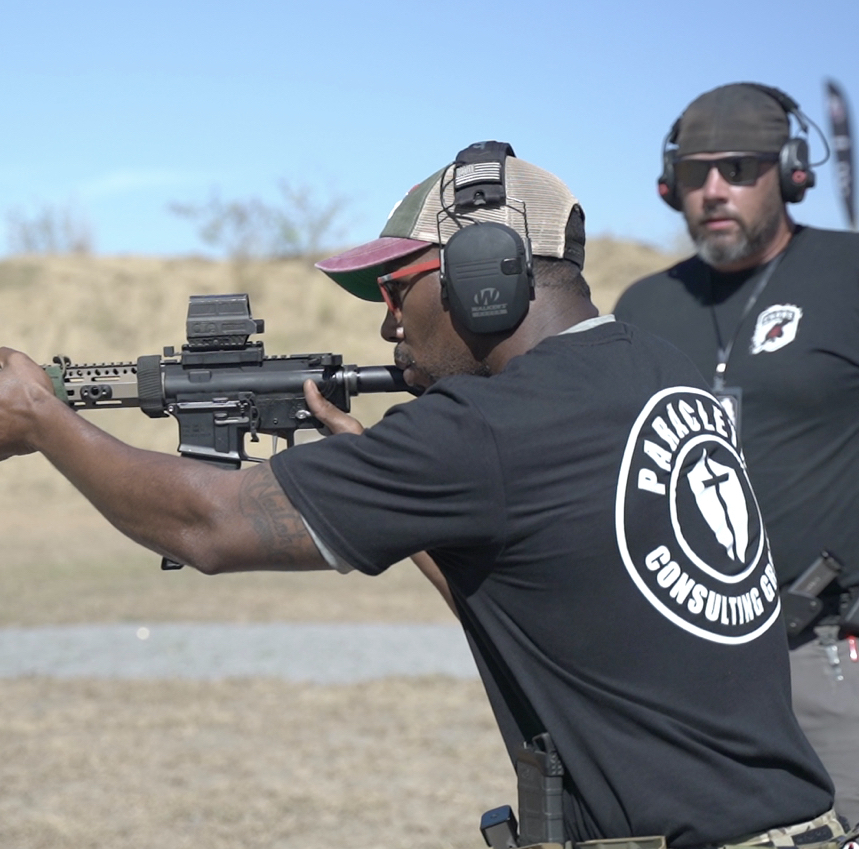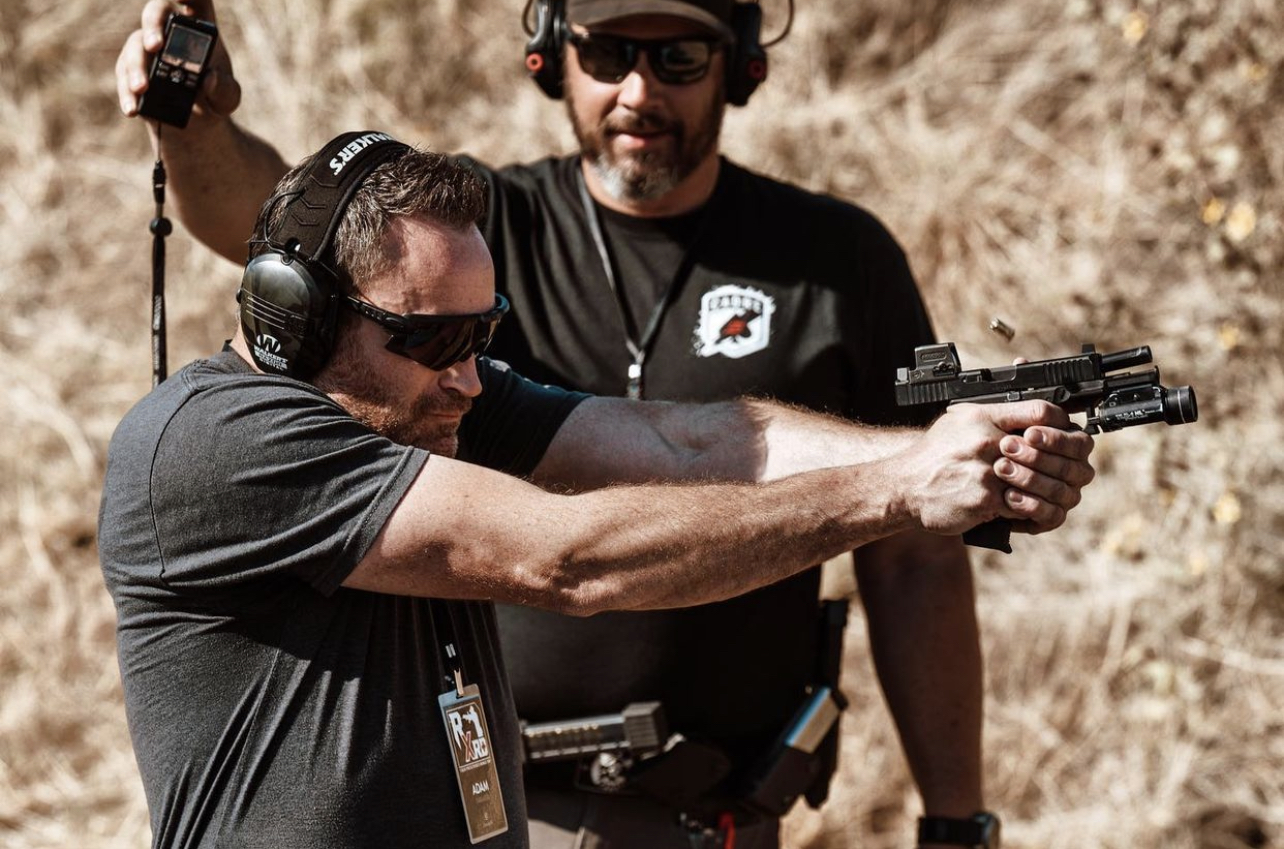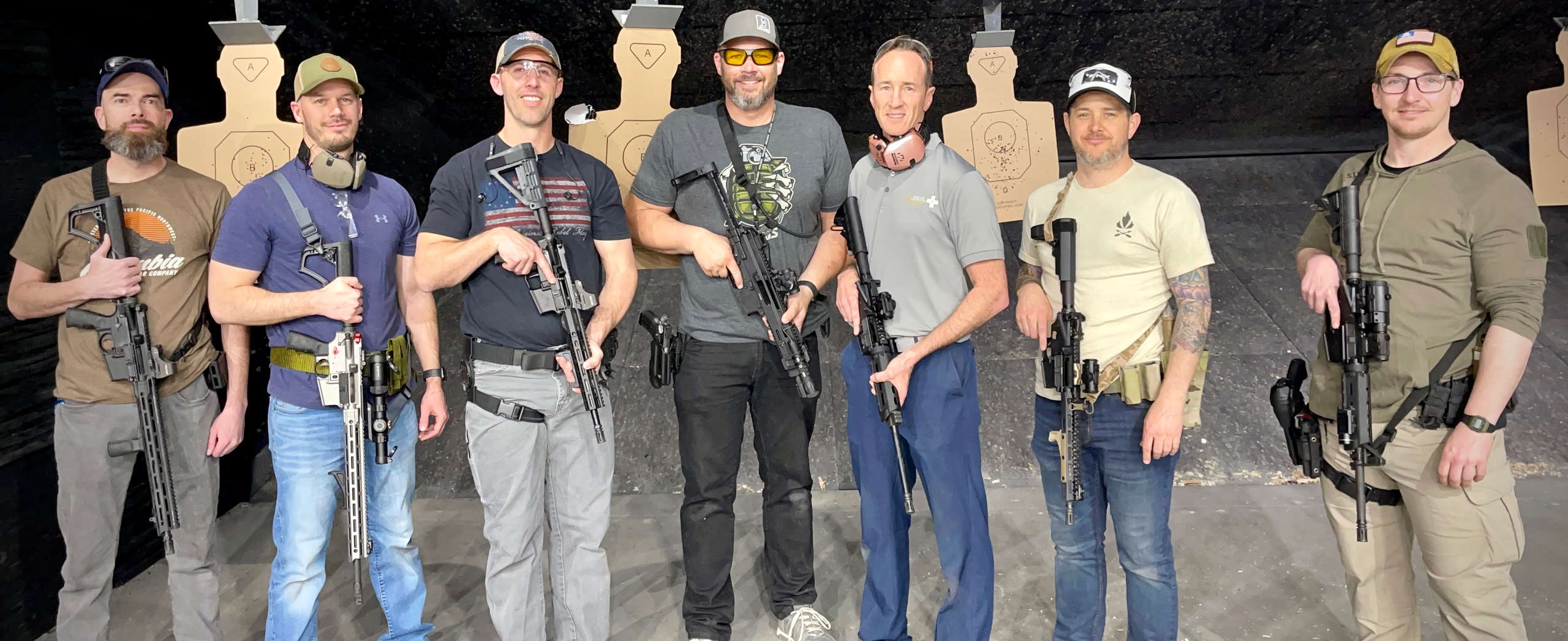
Ready to learn how to use that AR-15 you bought? Defensive Carbine Fundamentals is a 1-day course for those who have taken a basic firearms safety class, and want to refine and expand their shooting skills to modern rifle platforms with self defense in mind.
This curriculum will solidify the your foundation of carbine shooting fundamentals, and quickly push your understanding of a long gun shooting to new levels of performance in both long range and close quarters scenarios. All training material is based specifically around magazine-fed semi-automatic rifle platforms for self defense.
Exploring the possibilities of what you can achieve on these extremely capable weapon platforms with solid fundamentals is an exciting path to pursue, and this is the class that opens the door to many of those possibilities with your carbine. Ready to push your carbine comfort zone? Of course you are!
What You Will Learn
- Vision Training: Find your sights sooner & get on target faster.
- Selection & Setup: How to configure your carbine for defensive use.
- Marksmanship: Get more consistent shots, & shoot tighter groups at any distance.
- Working with a Sling: Develop a fast & effective presentations with a sling.
- Recoil Control: Manage recoil to your advantage.
- Long Range Shooting: Learn how to shoot long range targets with consistency from various positions.
- Manipulations & Reloads: Refine your carbine handling, & learn the 4 types of reloads every shooter needs to know.
- Clearing Malfunctions: Learn the fastest way to get your gun back into the fight, & keeping it running.
- Shooting & Moving: Explore fundamentals of moving with a long gun while engaging targets.
- Target Transitions: Quickly move your firearm from one target to the next with speed & accuracy.
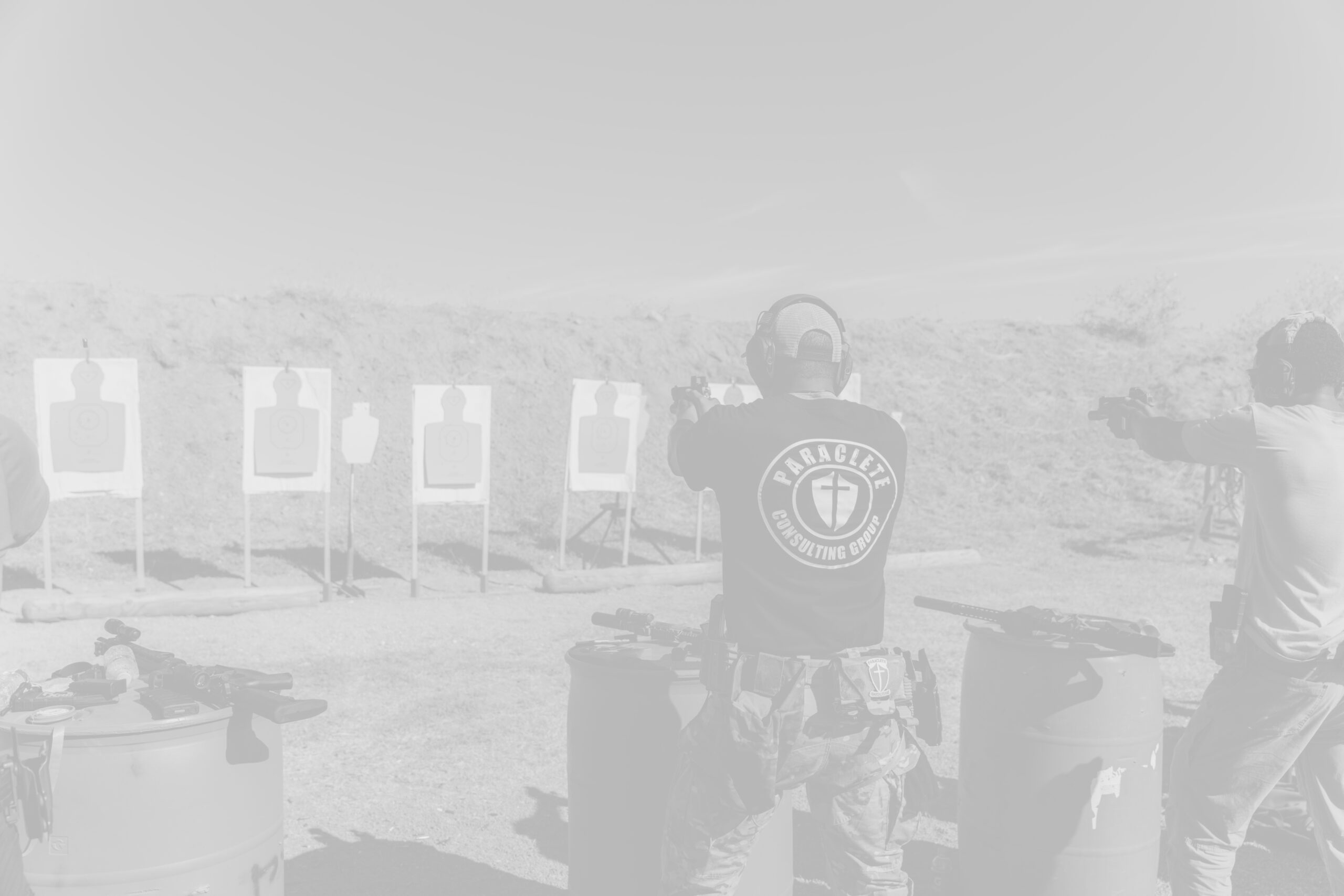
Host A Defensive Carbine
Fundamentals Class At Your Range!
Don't you don't see an event date or location that works for you or your group?
Host one at your range! Click below and tell us about it!
What To Bring
- Serviceable Semi-Automatic Modern Rifle
- Carbine Must Be Equipped With a 1x Red Dot or LPVO Optic
- 250 Rounds of Ammunition
- Five (5) Dummy Rounds
- Four (4) 30-Round Magazines
- Eye Protection
- Electronic Hearing Protection
- Two-Point Sling
- Stiff EDC, Duty, or Competition Belt
- One (1) Magazine Carrier or (Optional) Chest Rig
- Firearm Maintenance & Cleaning Supplies
- Permanent Marker
- Knee & Elbow Pads
- Functional Range Attire
- Shooting Blanket
- Food & Water
- First Aid Kit
- Note Taking Materials
- Positive Attitude
FAQs
Close toed ATHLETIC shoes are an absolute must. Dress for the task at hand. When shooting semi-automatic firearms, hot brass (or steel) casing are ejected rapidly. Running the unnecessary risk of a single hot casing making contact with bare feed can be a safety hazard for yourself and those next to you on the firing line. If you do not have close toed shoes when you arrive for class, you will be sent away to go get a pair before you are allowed to participate.
While certain hosting ranges have very specific ammo requirements due to location and equipment, these restrictions will be specified on all promotional material prior to the event or class. Universal restrictions for all classes Elevated Training puts on will include (but may not be limited to):
- Armor-Piercing Rounds
- Tracer Rounds
- Any Steel Core Projectiles
- Incendiary Ammunition
- Steel Birdshot
- Steel Buckshot
If you are unsure about your specific gun ammo combination, send us an email so we can help you out. If you are unsure about what you have, and if it can be used, feel free to contact us, and we’ll help you figure it out!
We highly recommend you do not wait to purchase ammunition the day of the class. Ammo availability is scarce and intermittent sometimes. If you are bringing your own gun, the best policy is to check with the range hosting the class to be certain they have ammo available. If you are renting a firearm, then it is most often the policy of the range that you must use ammo they sell you to shoot their guns. Either way, plan ahead and make sure you have what you need before the day of the class.
Only if it is required by the range hosting the event or class. Specific ammo restrictions will be noted on all promotional material if this is the case.
Click on the event above you are interested in, and you will be taken to the appropriate registration page. Depending on how a class or event is organized, some are booked directly through Elevated Training, while others are booked through the range or another organizing group.
This varies from class to class. Please refer to the class description for specific ammo type and quantity required.
Allowable minimum age for minor students varies depending on the class. Regardless, all minors need to be accompanied by a legal part or guardian, and arrangements for minors attending any class. Age restrictions are as follows.
Concealed Firearms Permit Classes
Whether the concealed carry class involves the practical application of firing handguns with live ammunition at the range, or not; only minors that are 90 days away from their 18th birthday may attend a Utah CFP class, as they are within the acceptable date range of applying for and obtaining a provisional concealed firearms permit.
Classes Without Live Ammunition
Minor students ages 12 and up may attend all classes that do not involve discharging live rounds from firearms. Some live events and classes hosted by third parties may have different age restrictions, and will be specified on all promotional material prior to the event.
Classes With Live Ammunition
For live in-person events and classes that involve the handling of live ammunition in guns on a shooting range the minimum age is 16 if Elevated Training is putting on the event.
Private Instruction
Private instruction is available for minors 12 years and up when accompanied by an adult.
A firearm is required for every student to take this class, however you don’t need to be the official owner of a firearm in order to use one during class. If you aren’t sure what type of firearm you want to own, we encourage you to rent one the range (if the option is available), or borrow one from a reliable friend or family member in order to take the class. If you do wind up renting from range hosting the class, they usually require that their ammo be used in their guns for safety reasons.
It depends on whether the class you have registered for is put on by a third party (such as a shooting range), or if the class is put on by Elevated Training. Third parties hosting a live event or class have their own registration, cancelation, and refund policies. If the live event or class is put on by Elevated Training directly, then our registration, cancelation, and refund policies apply. Please review our Class Cancelation Policy carefully if you are concerned you might need to do so.
It depends on whether the class you have registered for is put on by a third party (such as a shooting range), or if the class is put on by Elevated Training. Third parties hosting a live event or class have their own rescheduling policies. If the live event or class is put on by Elevated Training directly, then our rescheduling policies apply. Please review our Class Cancelation Policy carefully if you think you may need to do so.
Choosing a zero is both a personal thing, and a topic that is discussed at length in class. Come with what you have, and we will make adjustments as needed. It is likely that your personal preferences for a standard zero you use on your carbine will change by the end of class.
You are more than welcome! It is more than likely that your instructor will be demoing certain concepts with a less-than-conventional modern carbine too. See you in class!
For nearly all applications in this class, a 1x capable electronic optic is optimal. If your optic is capable of magnification, make certain it can be dialed down to 1x (no magnification). Students will struggle with close quarters shooting exercises with fixed magnification optics.
This class curriculum is based on modern semi-automatic magazine fed rifle platforms. Reference the “What To Bring” equipment list for more guidelines. If you are still unsure what to bring, feel free to contact us prior to class so we can help you.
There really isn’t a well-defined standardized guideline for where a long gun is defined specifically as a carbine. The most generally accepted defining criteria on this subject is barrel length. A rifle that has a barrel 20″ or shorter, it can usually be defined as a carbine. While this is not a hard-line definition, it is generally accepted knowledge that all carbines are rifles, but not all rifles are carbines.
Arrive with all your gear, ready to go 15 to 20 minutes before the scheduled start time. We will not wait for late students to arrive before we begin class.
The context in which material in all of our defensive classes is taught is with defensive applications front of mind. Simply put, long gun without a sling is like a handgun without a holster. During non-shooting moments, it is a best practice to have proximal control of your firearm, even while giving attention to other tasks at hand. Some of these tasks can be (bur are certainly not limited to); delivering first aid to the injured, or transitioning to your sidearm in the middle of an altercation should your long gun experience a malfunction or run empty. With practice, transitioning to a sidearm is almost always a faster option than performing a combat (emergency) reload, and it is certainly faster than clearing a malfunction.
This is a class designed to teach defensive shooting principles with modern rifles. One key element that allows shooters to take full advantage of the accuracy capabilities of modern carbine platforms is the use of an optic. Additionally, good portion of the class material is based around optimizing the use of various optics from close up to distant target presentations. Students who have ignored this guidance and shown up with only iron sights have failed to benefit from much of what the class offers.
Brimmed headwear not only protects shooters from sun glare that can interrupt vision when firing a gun, but it also blocks hot brass casings from flying in your face, falling behind your eye protection, or falling down the collar of your shirt. Wearing a hat is a safety precaution every shooter attending class should seriously consider.

